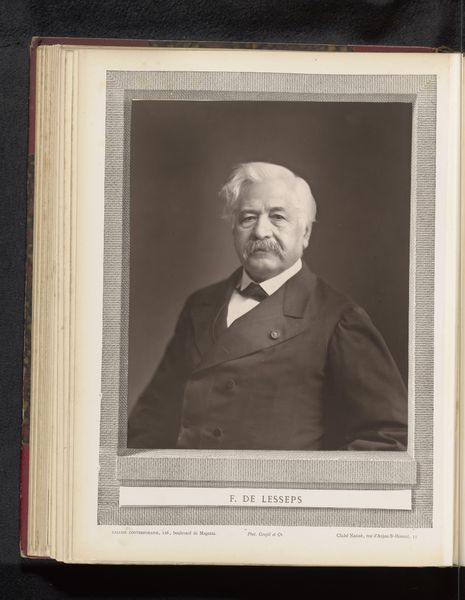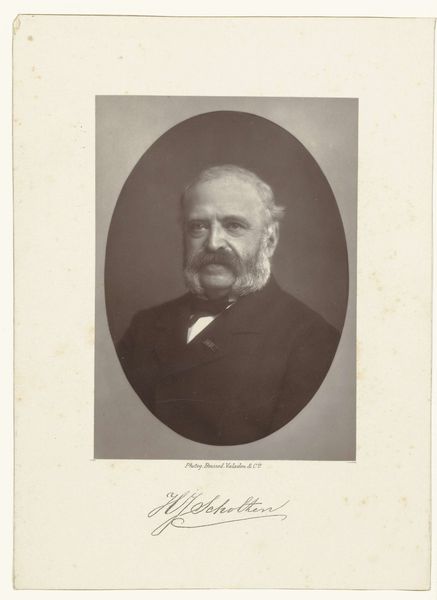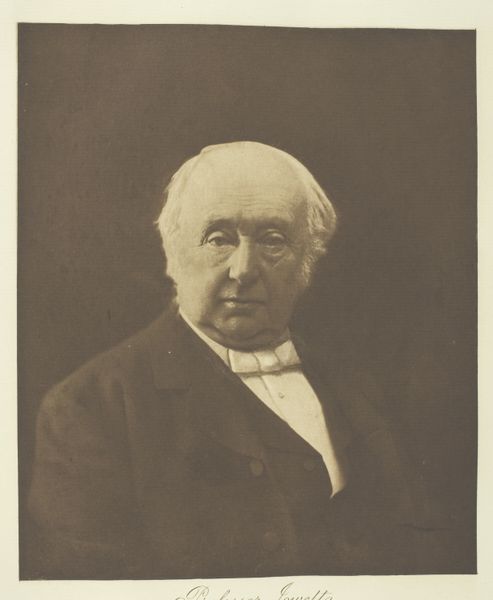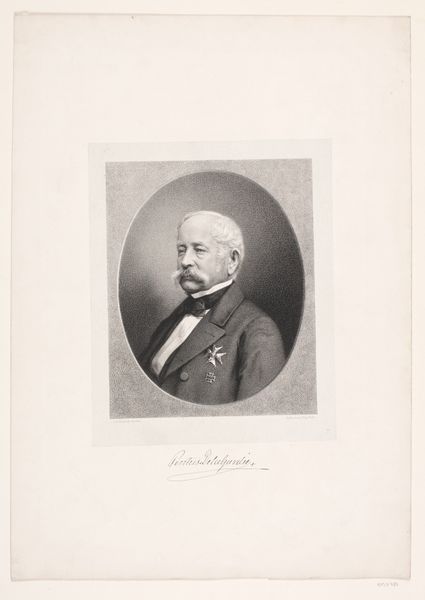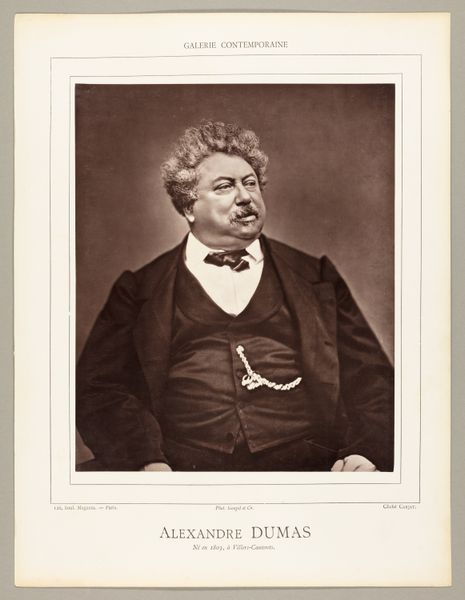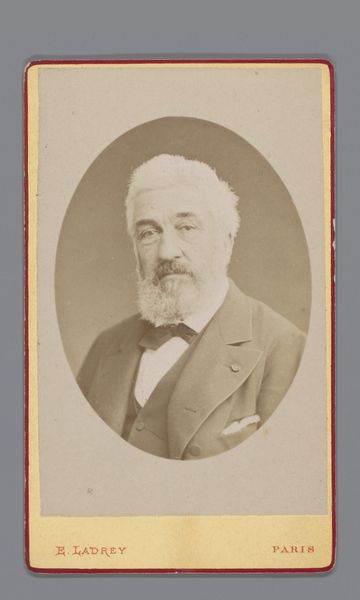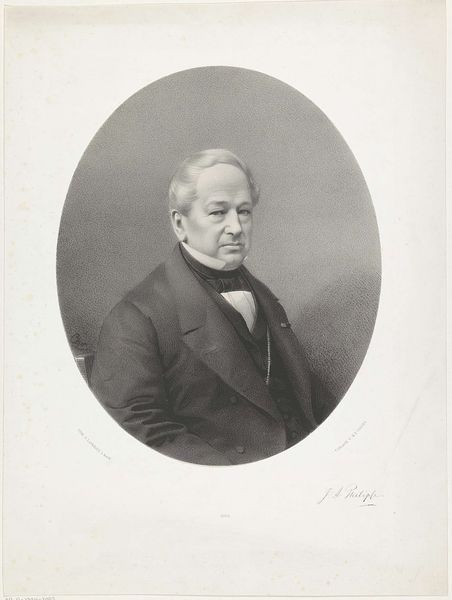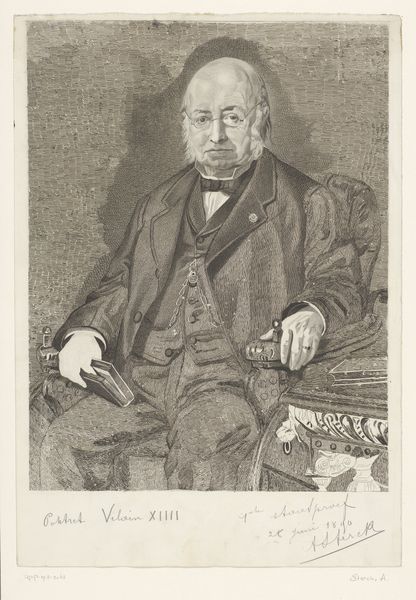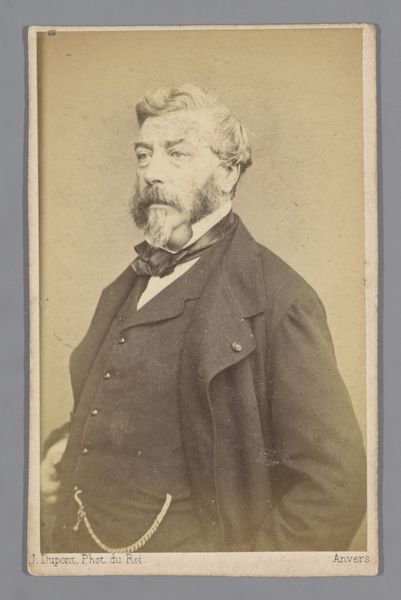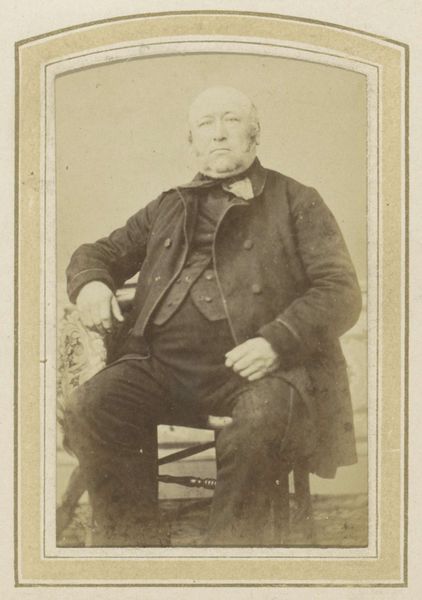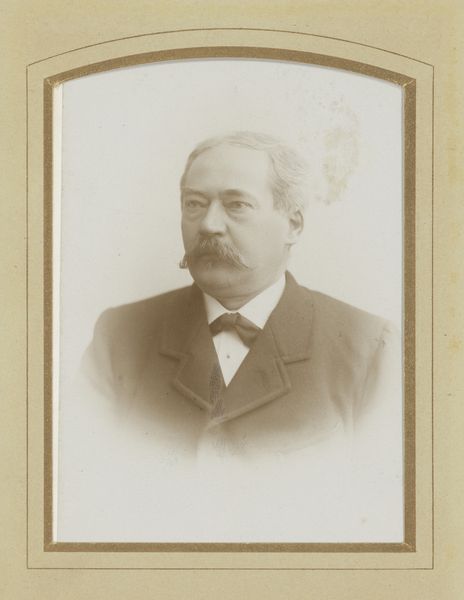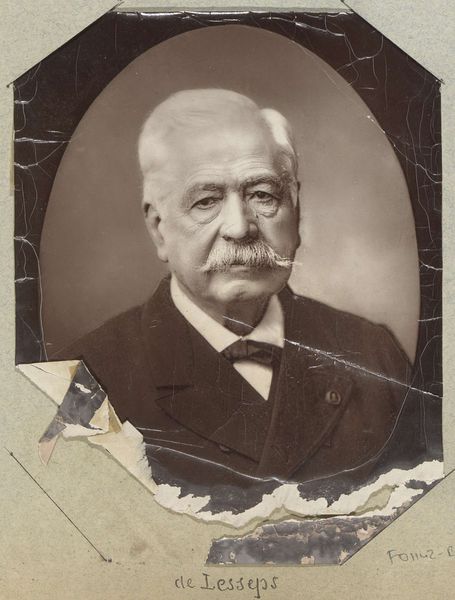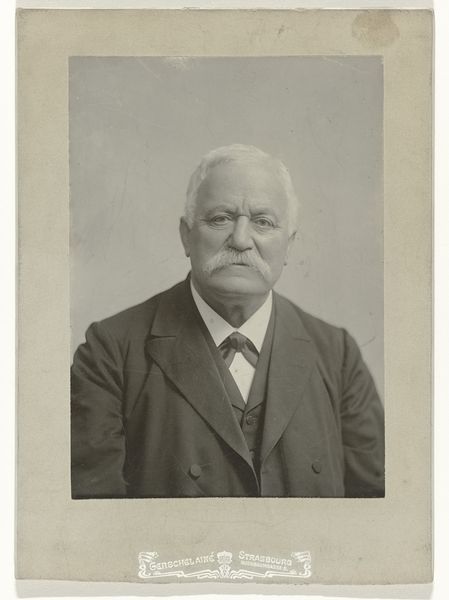
Dimensions: 23.8 × 19.3 cm (image/paper); 34.2 × 26 cm (mount)
Copyright: Public Domain
Editor: Here we have Nadar's portrait of "F. de Lesseps," a gelatin silver print from around 1876. It feels so formal and staged, quite typical of portraits from that era. What's your take on this, how do you interpret this work within its historical context? Curator: Well, considering Nadar's legacy and the subject’s prominence, this isn't just a portrait; it's a carefully constructed representation of power and progress. Ferdinand de Lesseps, the man behind the Suez Canal, was practically a symbol of French ambition. This image, circulated widely, helped solidify that image. How do you think the relatively new medium of photography played into the creation of these public figures? Editor: I guess photography offered a new level of 'realism' that painting couldn't, making these figures seem more accessible and trustworthy. Yet, it's still a very constructed image, right? Curator: Exactly! And Nadar was keenly aware of that. He uses lighting, pose, and composition to convey specific messages about his subjects. This photograph helped construct and disseminate a carefully curated image of de Lesseps at the height of his success. Did this constructed image impact future public perception of him, especially considering the later Panama Canal scandal? Editor: It’s fascinating how a single image can contribute to shaping someone’s public persona, for better or for worse. It's hard to disconnect this confident portrait from the later controversy. Curator: It underscores how art and photography, even portraits, participate in larger political narratives, reflecting and influencing public opinion. Considering the medium, is there a way in which this particular image affected Nadar's own career, or how photography itself was percieved? Editor: That's something I hadn't considered before! It all ties into this bigger web of social and political implications, far beyond just aesthetics. Thanks for the insights. Curator: Absolutely. Thinking about art in this way helps us understand its power to shape our world.
Comments
No comments
Be the first to comment and join the conversation on the ultimate creative platform.
